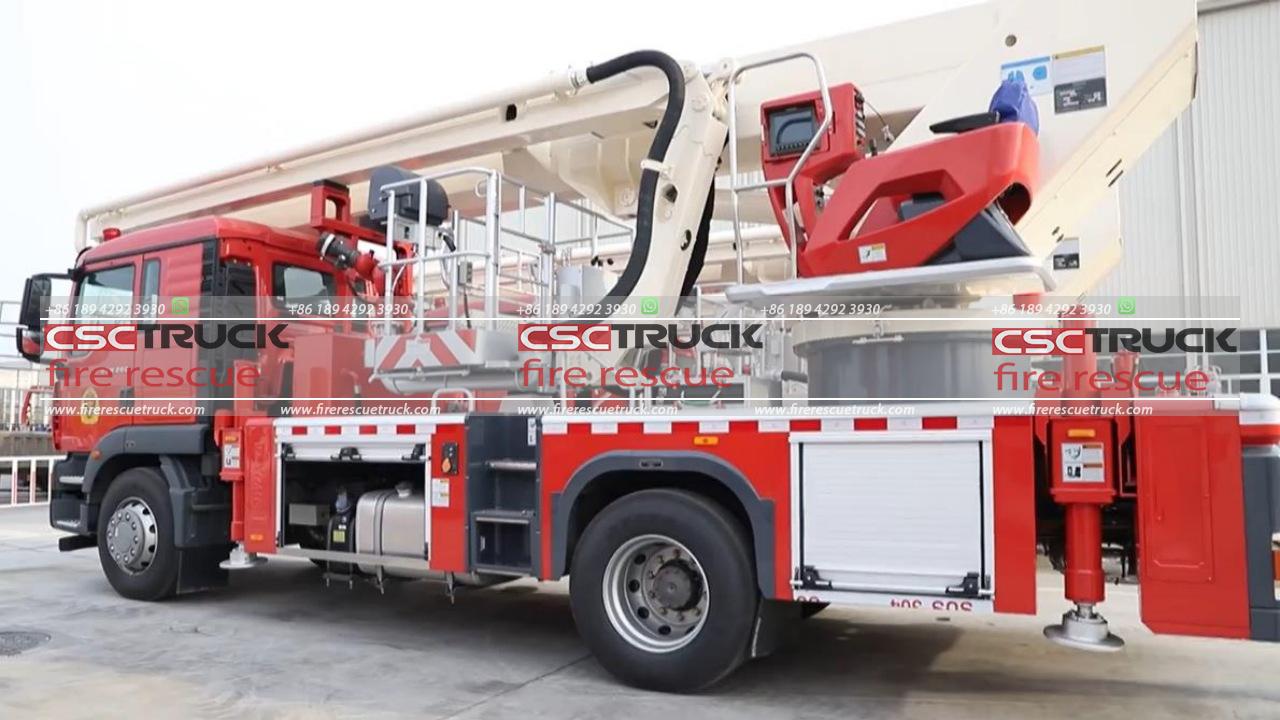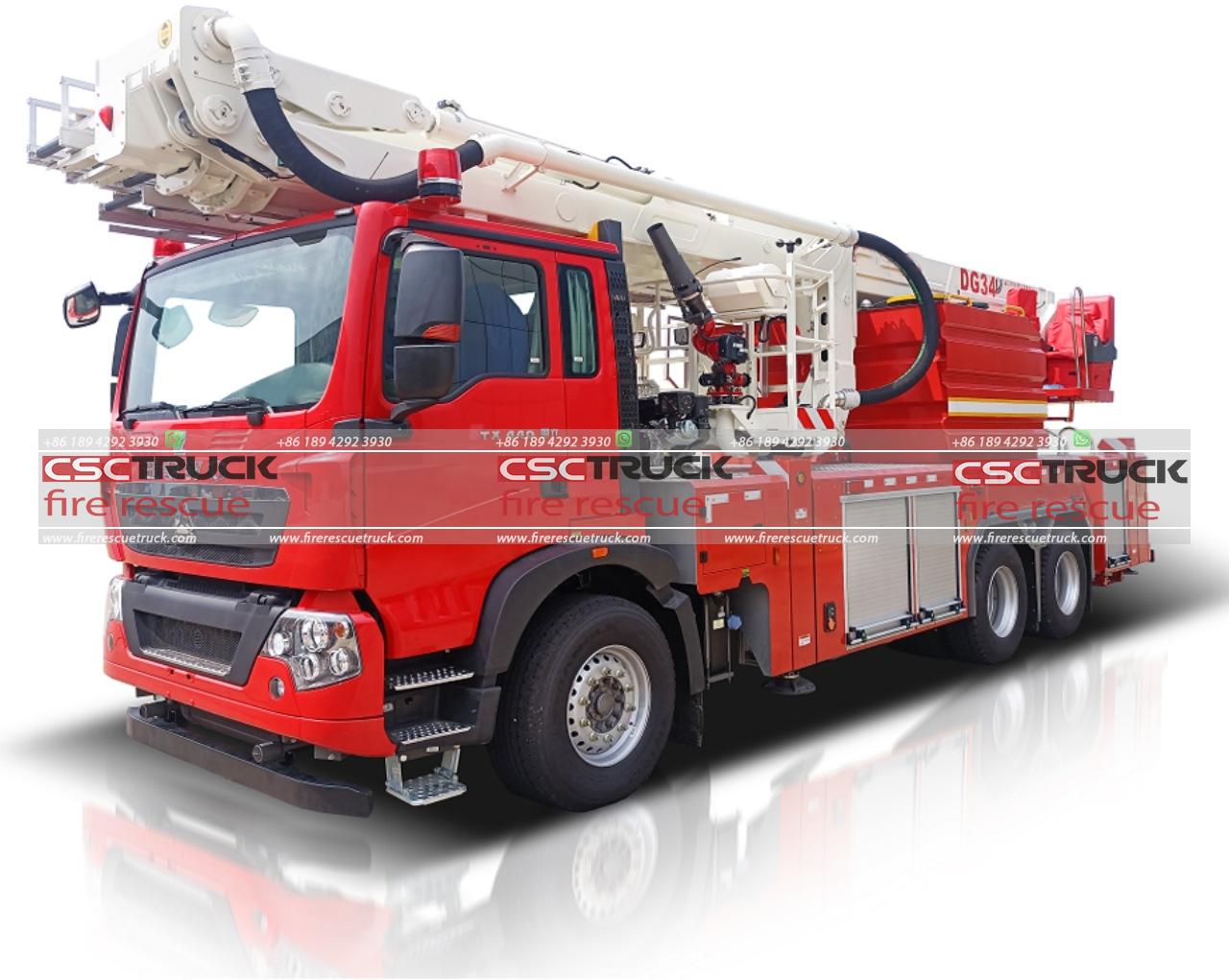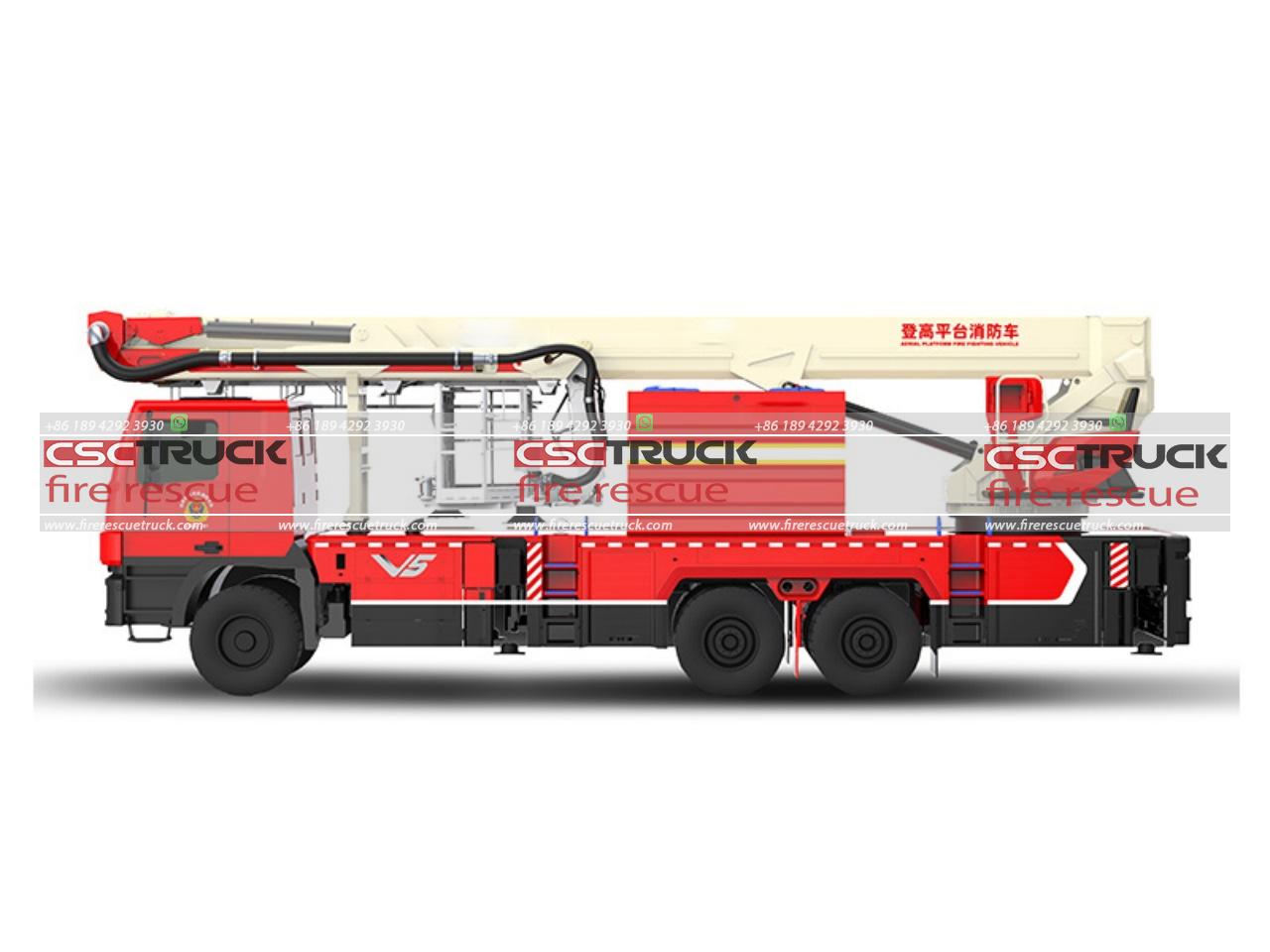In the ever-evolving battle against wildfires, innovative technologies, and strategies are essential to combat the increasing intensity and frequency of these natural disasters. Among the arsenal of firefighting tools, the aerial fire truck, also known as the sky guardian, emerges as a powerful ally in the fight against raging infernos. With its ability to deliver rapid response, strategic precision, and unparalleled aerial coverage, the aerial fire truck is revolutionizing the way we approach wildfire suppression.
Aerial Fire Trucks: The Evolution of Firefighting
Traditional firefighting techniques often rely on ground-based crews equipped with hoses, bulldozers, and helicopters. While these methods are effective in certain situations, they face limitations in reaching remote or inaccessible areas and controlling wildfires swiftly. This is where aerial fire trucks come into play, offering a unique advantage with their ability to deliver massive quantities of water or fire retardant from above.
The concept of aerial firefighting dates back to the early 20th century when crop-dusting aircraft were repurposed to drop water on wildfires. Over the decades, advancements in aviation technology and firefighting techniques have led to the development of specialized aerial fire trucks tailored to the demands of modern wildfire suppression.

The Power of Precision
One of the defining features of aerial fire trucks is their precision in targeting wildfires with pinpoint accuracy. Equipped with sophisticated navigation systems and advanced payload delivery mechanisms, these aircraft can drop water or fire retardant directly onto the flames, minimizing collateral damage and maximizing effectiveness.
The utilization of aerial fire trucks allows firefighting agencies to create strategic containment lines, preventing the spread of wildfires into populated areas or sensitive ecosystems. By delivering precise payloads exactly where they are needed most, these sky guardians play a crucial role in gaining the upper hand in firefighting operations.
Rapid Response and Mobility
In the battle against wildfires, every moment counts. Aerial fire trucks offer unparalleled speed and mobility, enabling rapid deployment to emerging fire hotspots. Unlike ground-based crews, which may face obstacles such as rugged terrain or traffic congestion, aerial fire trucks can reach remote or inaccessible areas swiftly, allowing firefighters to contain wildfires before they escalate out of control.
Moreover, the ability of aerial fire trucks to refill their water tanks from nearby water sources further enhances their efficiency. By minimizing downtime between drops, these aircraft can maintain a continuous assault on wildfires, keeping them contained until ground crews can gain the upper hand.

Versatility in Action
The versatility of aerial fire trucks extends beyond their primary role in wildfire suppression. These aircraft are also instrumental in supporting other emergency response efforts, including search and rescue operations, medical evacuations, and disaster relief missions.
During wildfire outbreaks, aerial fire trucks can provide invaluable support to ground crews by conducting reconnaissance flights, assessing fire behavior, and guiding firefighting efforts from above. Additionally, their ability to transport personnel and equipment to remote locations makes them indispensable assets in challenging terrain or adverse weather conditions.
Innovations Driving Progress
As technology continues to advance, so too do the capabilities of aerial fire trucks. Recent innovations in aircraft design, firefighting equipment, and operational strategies are pushing the boundaries of what is possible in wildfire suppression.
One notable advancement is the development of unmanned aerial vehicles (UAVs) or drones equipped with firefighting capabilities. These autonomous aircraft can navigate hazardous environments and deliver payloads with unmatched precision, providing an additional layer of support to traditional firefighting efforts.
Furthermore, advancements in fire retardant formulations and delivery systems are enhancing the effectiveness of aerial fire trucks in combating wildfires. From eco-friendly retardants that minimize environmental impact to specialized drop mechanisms that optimize coverage, these innovations are improving the efficiency and sustainability of aerial firefighting operations.

Challenges and Opportunities Ahead
While aerial fire trucks offer tremendous potential in the fight against wildfires, they also face challenges that must be addressed to maximize their effectiveness. Chief among these challenges are budget constraints, regulatory hurdles, and the need for ongoing training and maintenance.
Additionally, as wildfires continue to increase in frequency and intensity due to factors such as climate change and urbanization, the demand for aerial firefighting resources is likely to grow. Firefighting agencies must invest in expanding their aerial firefighting fleets, enhancing coordination between ground and air assets, and adopting innovative strategies to meet the evolving threat of wildfires.
Despite these challenges, the rise of aerial fire trucks represents a significant leap forward in our ability to protect lives, property, and natural resources from the devastating impact of wildfires. By leveraging the power of precision, rapid response, and versatility, these sky guardians are reshaping the landscape of wildfire suppression and forging a path toward a safer, more resilient future.
Conclusion
In the relentless battle against wildfires, aerial fire trucks stand as a beacon of hope, unleashing the power of precision and agility to combat nature’s most formidable foe. As technology continues to evolve and innovation drives progress, these sky guardians will play an increasingly vital role in safeguarding communities, ecosystems, and livelihoods from the ravages of wildfire devastation. With dedication, collaboration, and forward-thinking strategies, we can harness the full potential of aerial fire trucks and rise to meet the challenges of the wildfire crisis head-on. Together, we can turn the tide in favor of safety, resilience, and a brighter tomorrow.







